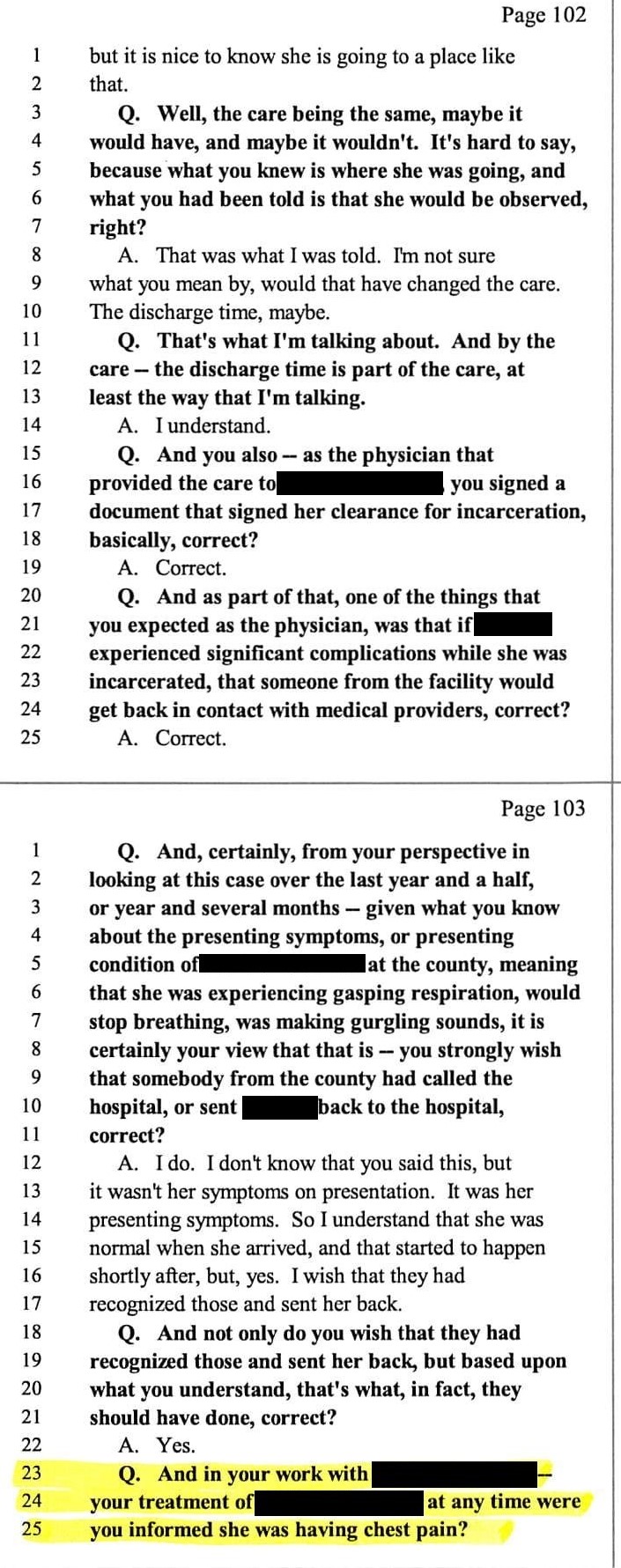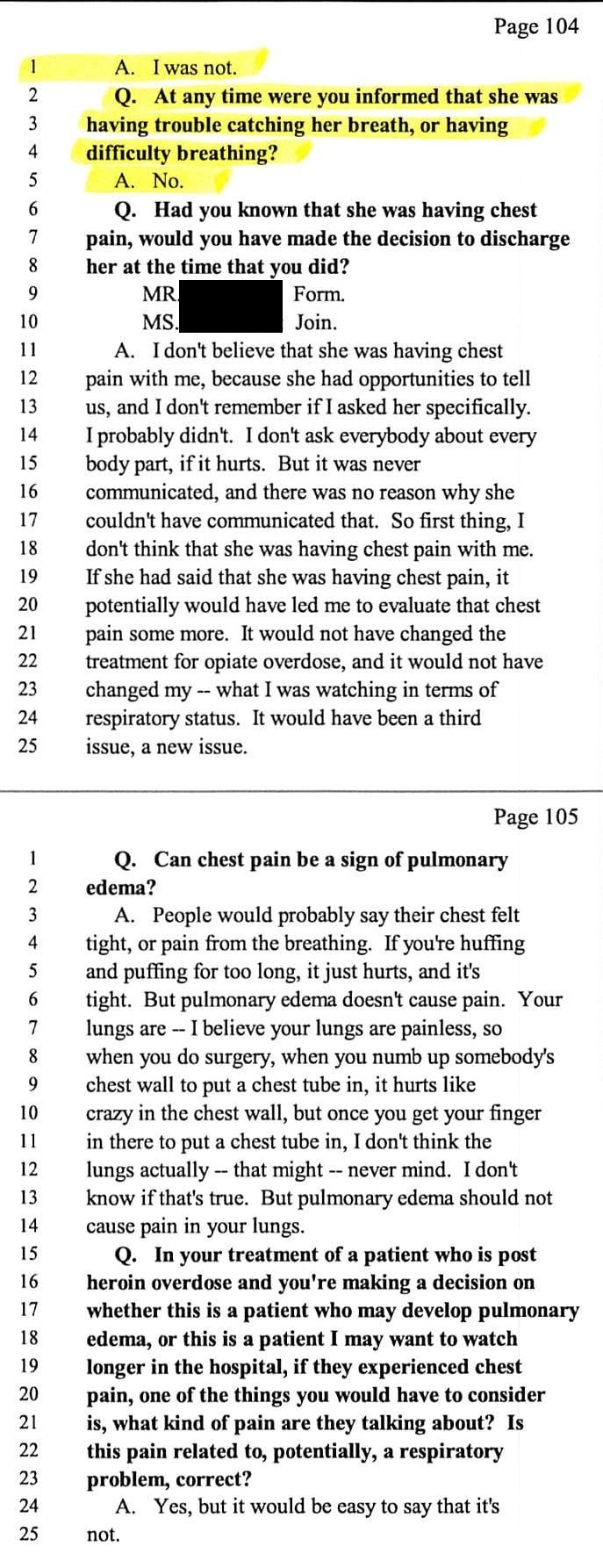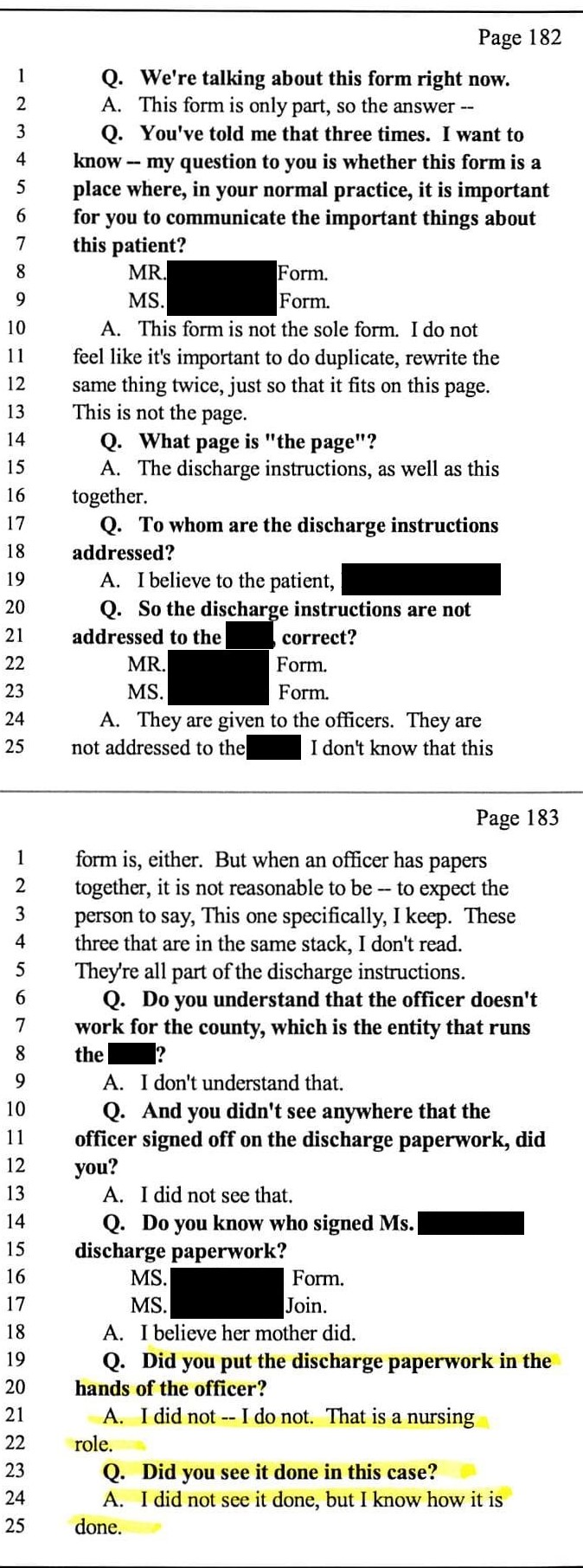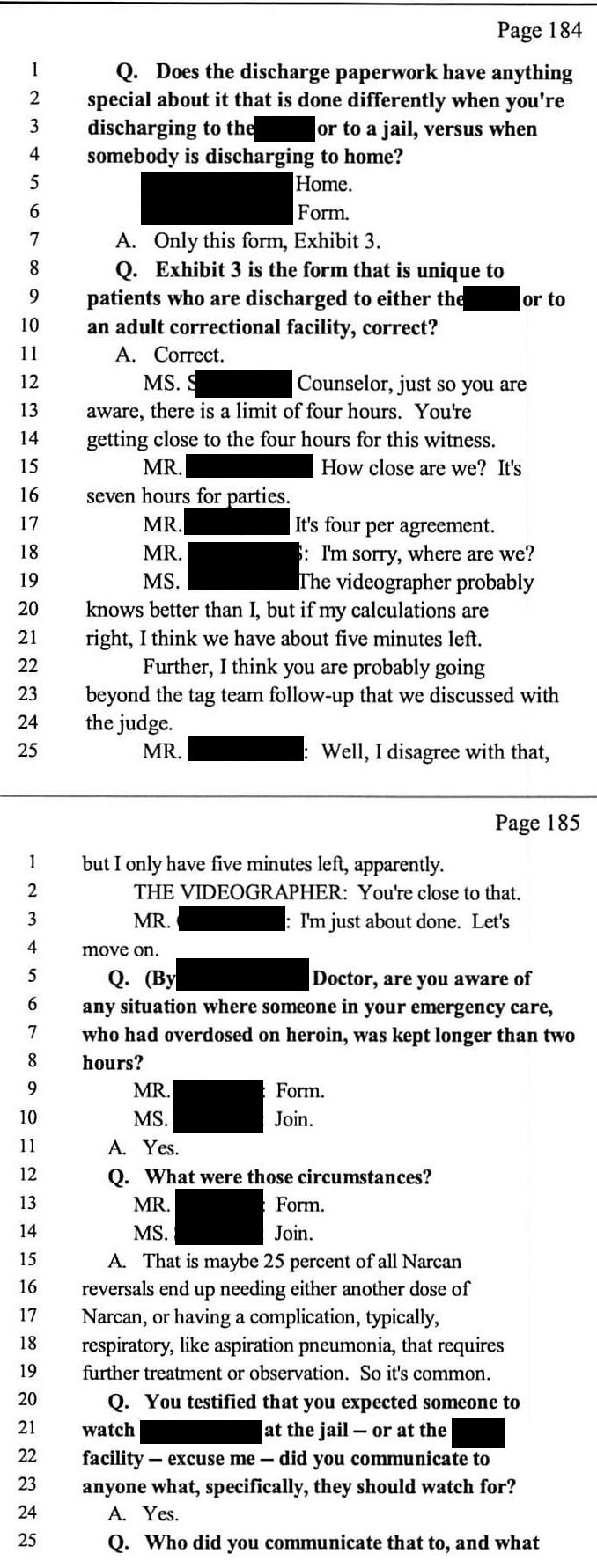Home Page
Case 1: Shortness of Breath
Case 2: Fever
Case 3
Introduction
Outcome
Deposition
Legal
Documentation
Medical Review
The family of the deceased patient brought a lawsuit against the doctor, hospital, and the county that oversees the juvenile detention facility, among others. Additional information during the court proceedings revealed that the patient may not have actually been fully recovered at the time of her discharge from the ED. Below is a description of her state from her mother, who was with her when the patient was discharged from the ED to the juvenile detention facility. It is taken from the mother’s deposition.
(Please note that there is some technical legal format to the conversation, including lawyers interjecting comments such as “Form” and “Join”, that can be safely ignored for understanding the medical issues of the case).
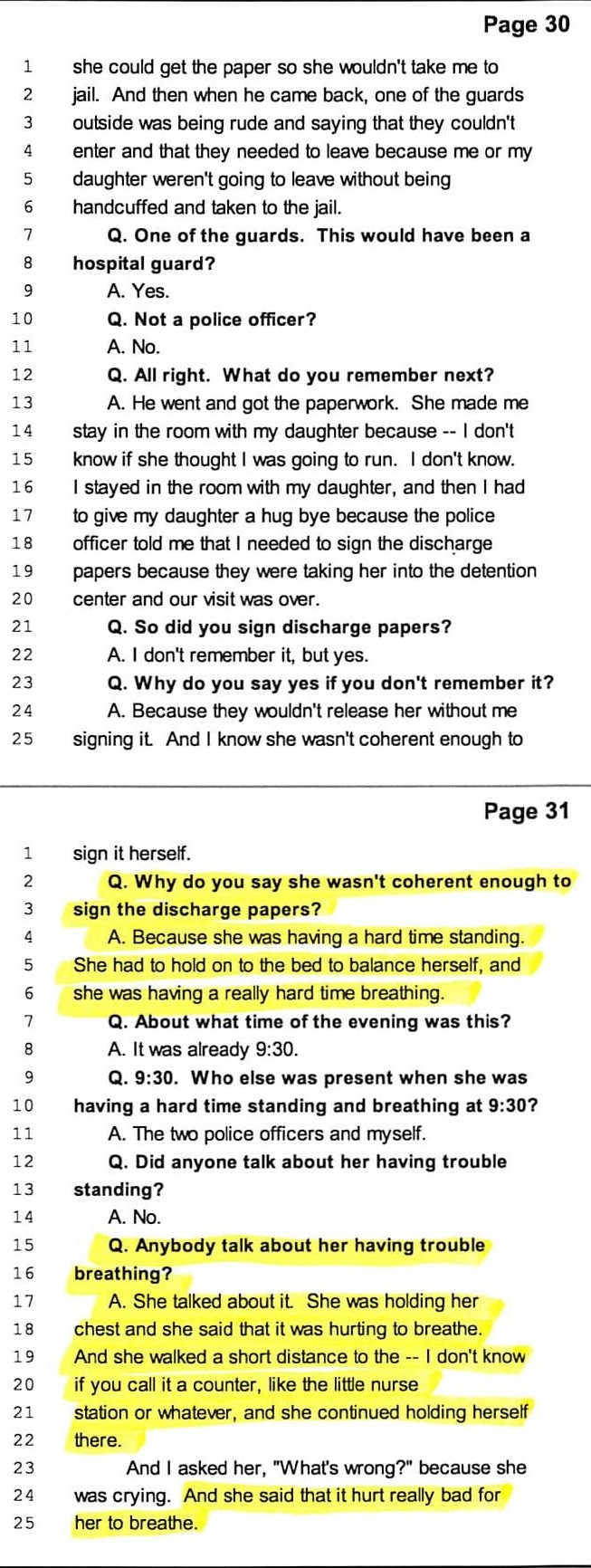
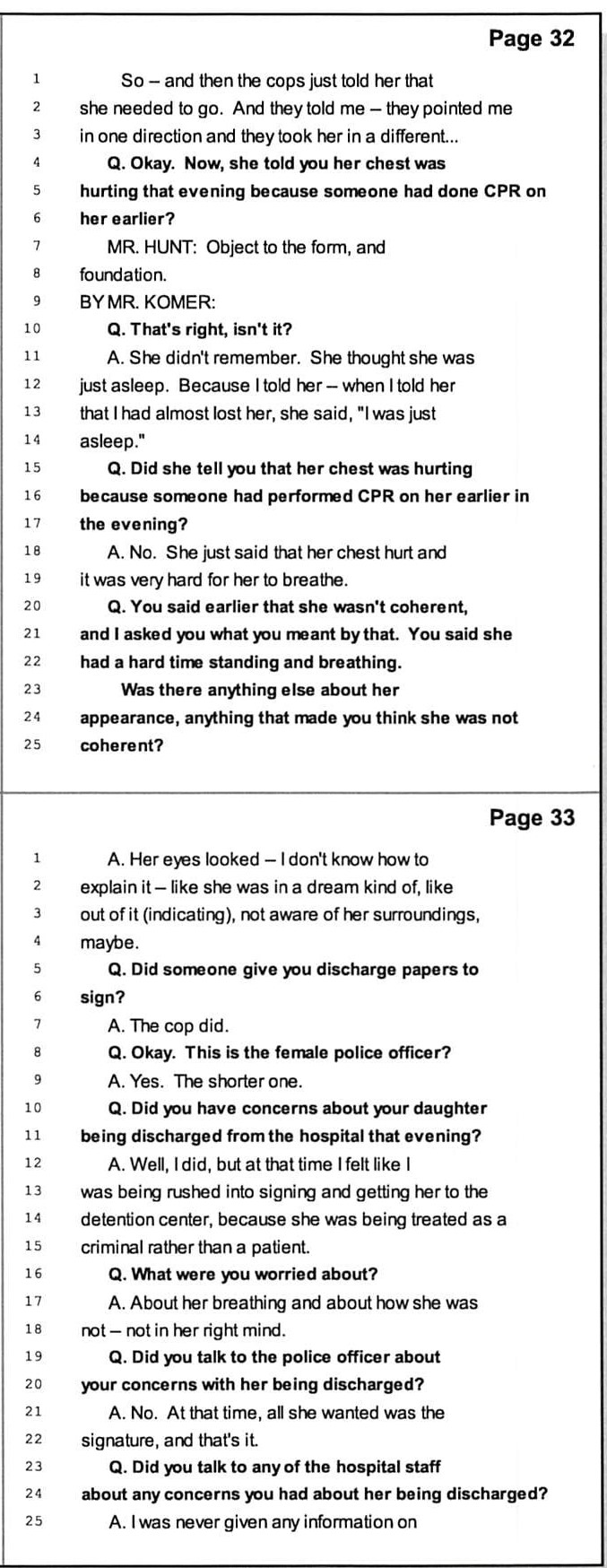
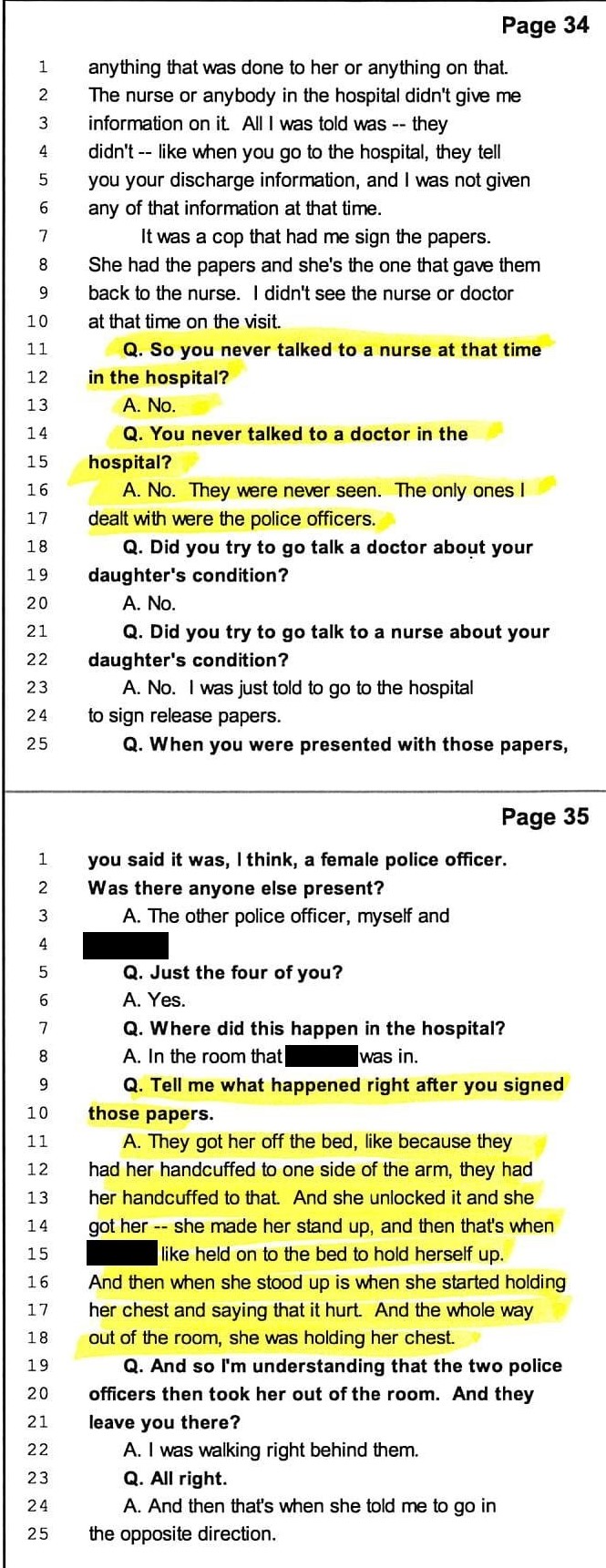
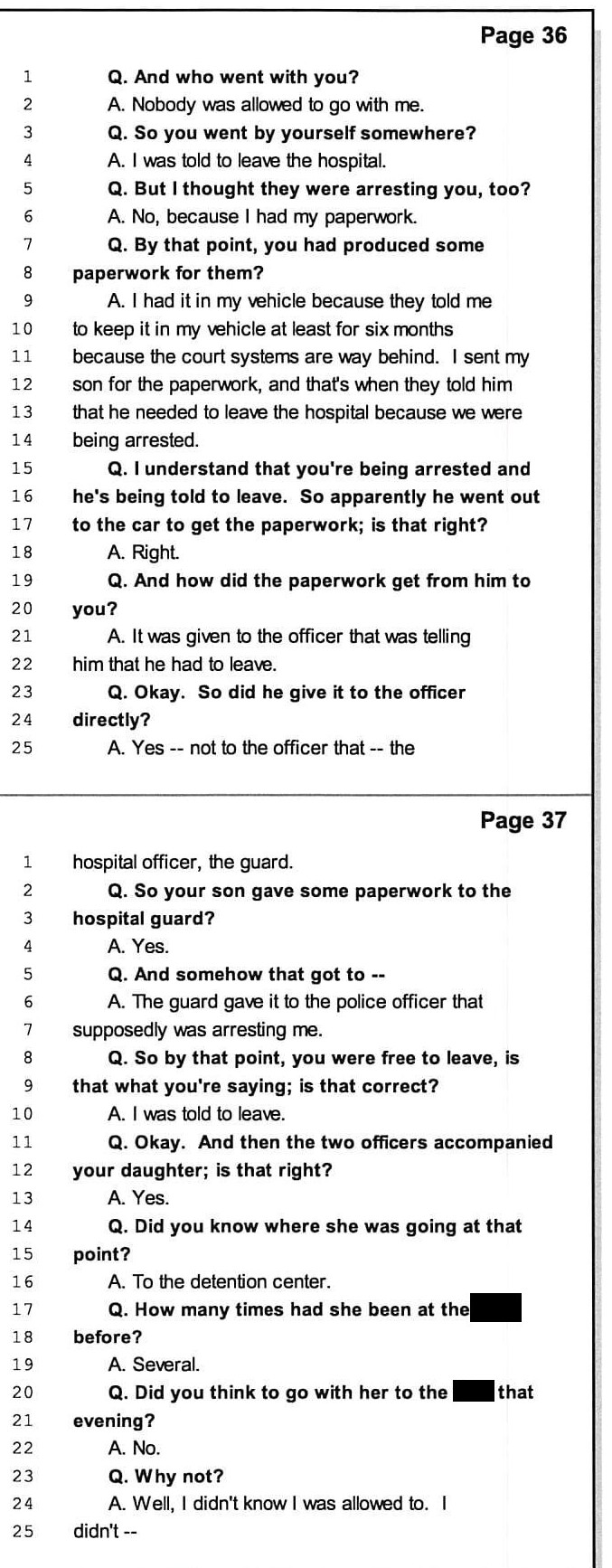
Here is the physician’s response during the deposition. Pages 78 and 79 below are discussion amongst a medal-legal review panel, and page 80 and onward are questions posed to the treating (defendant) physician.
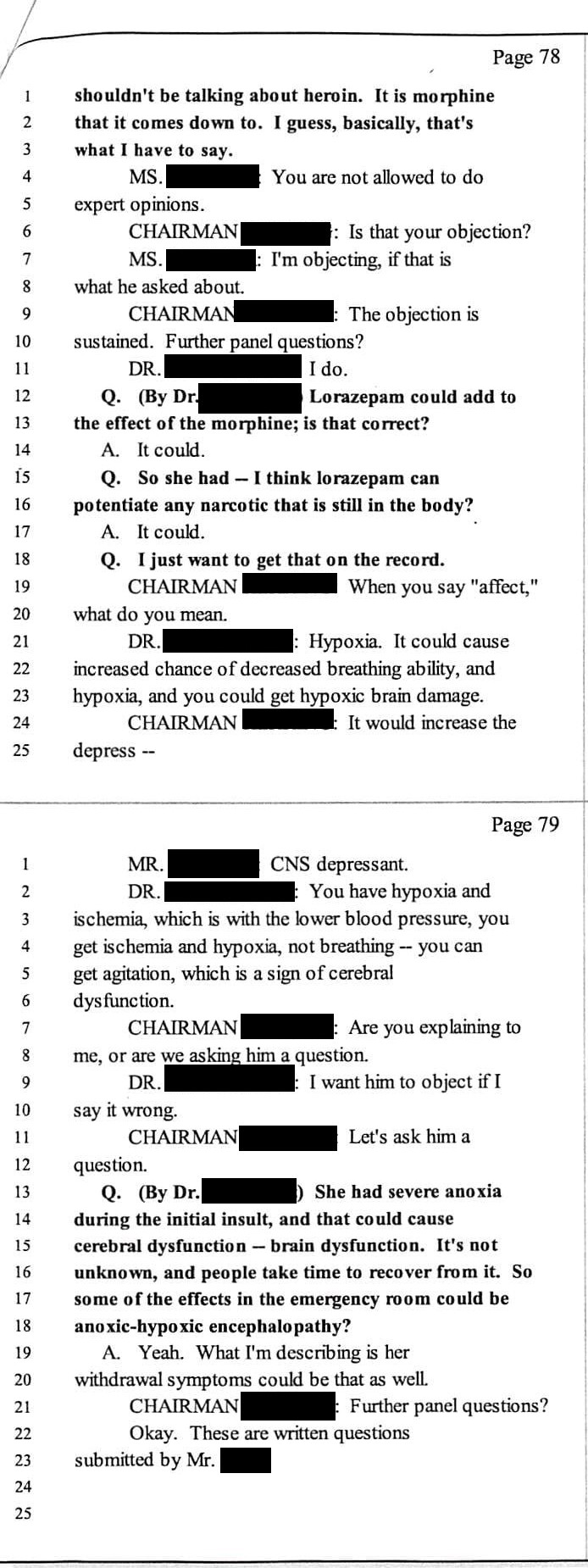
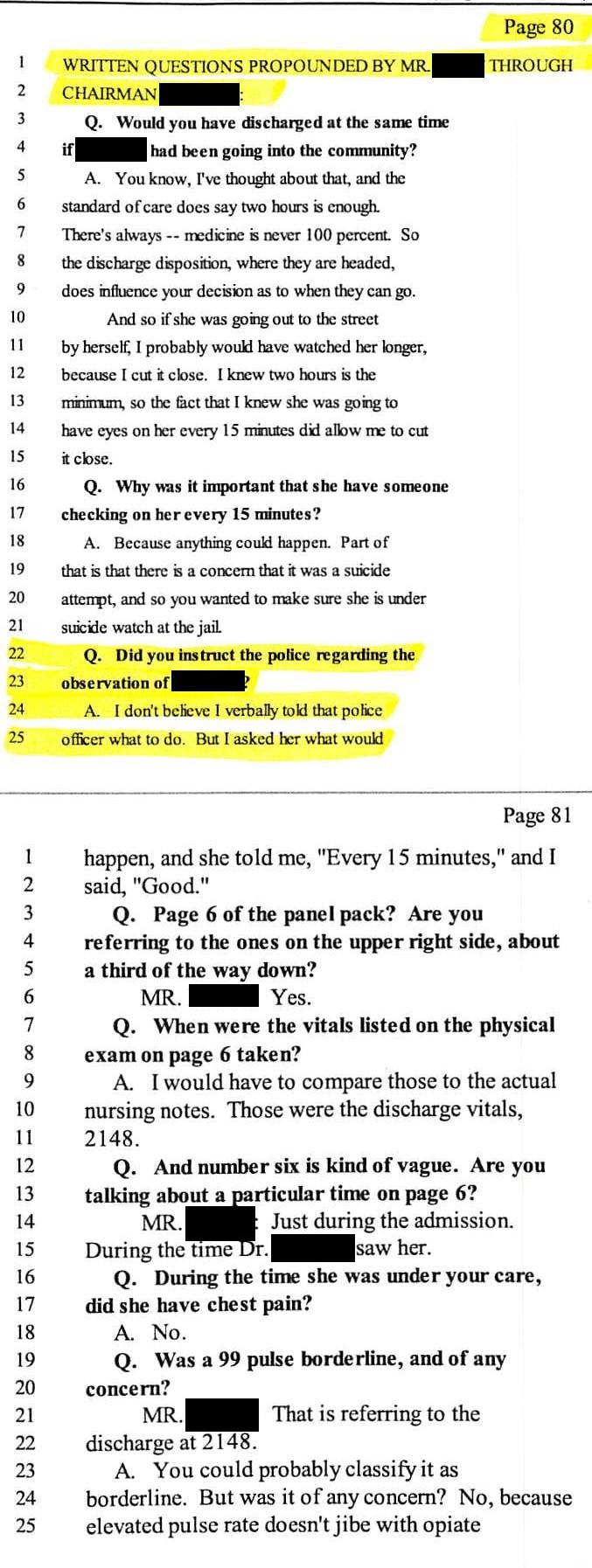
And further deposition testimony:
Two workers at the juvenile detention center also filed reports following the incident, which are shown below. They indicate that the patient was not acting normally at the time of intake, and was having breathing problems for some time prior to being found apneic and pulseless.
Worker #1 Statement:
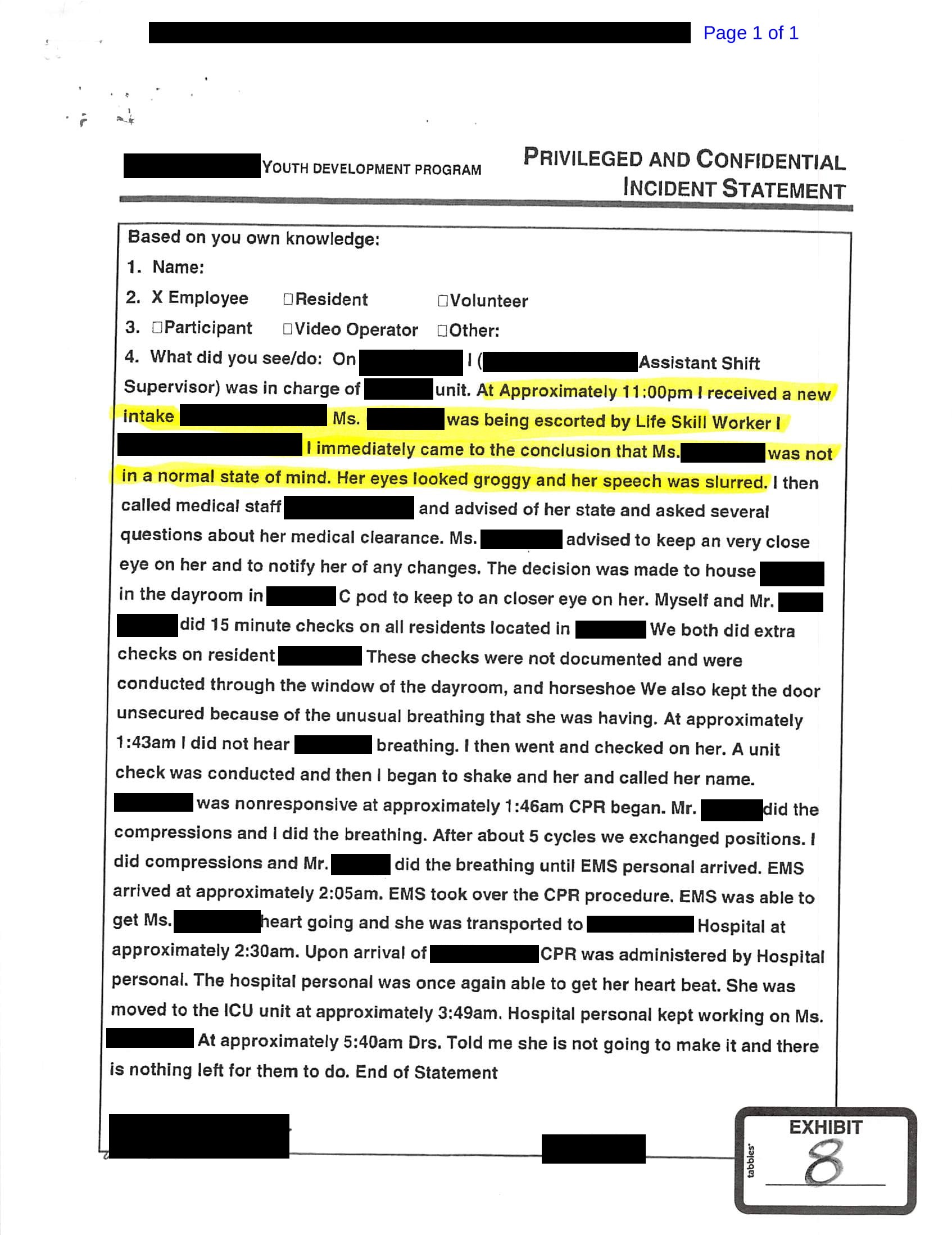
Worker #2 Statement:
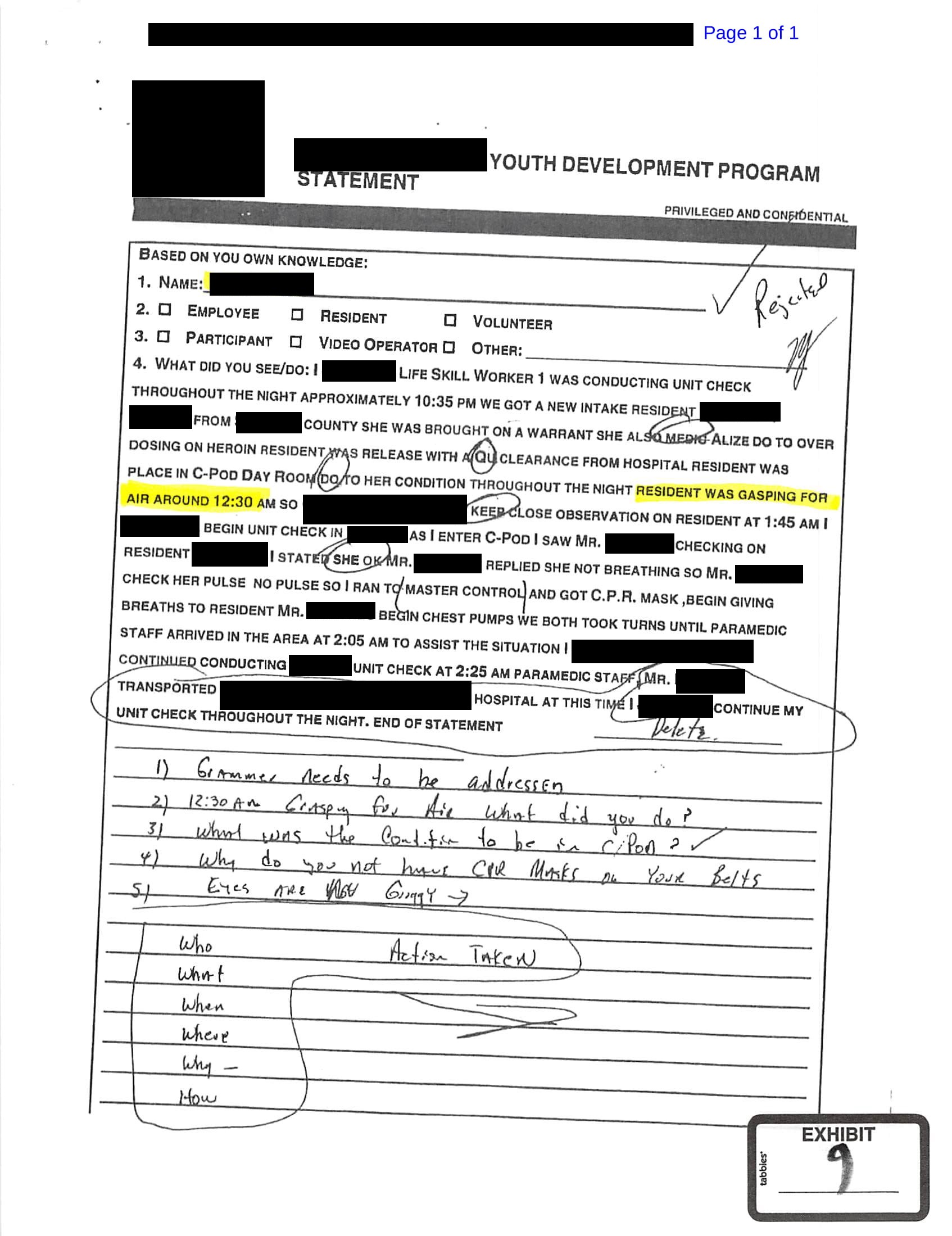
There is clearly a discrepancy between the doctor’s discharge documentation and the mother’s deposition, as well as the juvenile detention center’s statements. While the doctor’s discharge seems to indicate that she is acting normally, the other statements illustrate a much different picture. Her mother reports that she was having a hard time standing and a hard time breathing, before she even left the ED. At the detention facility she was described as being “groggy” and “slurring” her speech.
It is difficult to know which version of events is correct. There are two completely different descriptions of the patient’s status around the time of discharge. Given the bad outcome, and the fact that several non-medical sources (mother and 2 detention center staff) indicate that she was not acting normally, it does draw into question the accuracy of the physician’s documentation. In fact, the style of documentation on the T-sheet also has caused some readers to question if some parts of it were added post-hoc by the physician. More thorough discharge planning could have included a more specific description of her state, a documented conversation with her mother about the patient’s status in the ED, review of return precautions with the police, and clarification about the monitoring at the jail.

